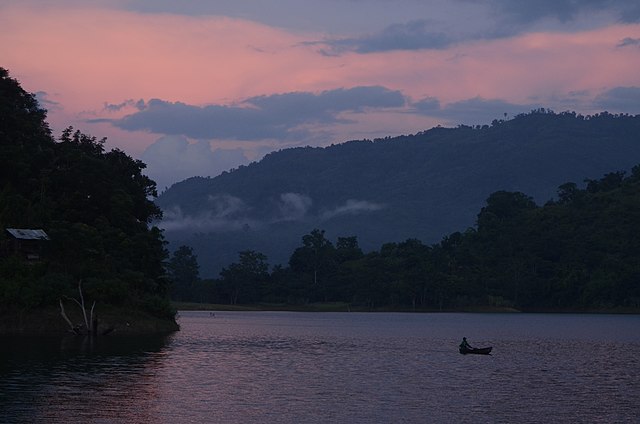 |
| Geography of Nagaland |
It is spread over the area of 16579 sq km with a population of 1,980,602 as per 2011 census. It has been divided into 12 districts which are futher sub-divided into 74 blocks for better administration and management of the state.
The topography of Nagaland depicts a young mountain terrain and barring 8 per cent of plain area limited to Dimarpur, it has an average altitude of 1000 meters above sea level. The mountain system of Nagaland can be divided into four different mountain ranges, namely, 1. Low Mountain Range, 2. Middle Mountain Range, 3. Patkai Mountain Range and 4. Barail Mountain Range.
The Low Mountain Range runs along the Assam and Nagaland border. The range starts from Jalukie in Peren district and runs northward through the length of the state. It comprises some riches agricultural valleys, namely, Jalukie, Medziphe, Baghty, Changki-Tsurang and Tiru. Dimarpur and Champang are two important commercial centers in this area. This area falls under territory of Zeliangs, Angamis, Lothas, Aos and Kongyaks.
The Middle Mountain Range runs through the middle of the state from north to south. This range consist many offshoots which run in either east or west. Mao, Pfutsero, Chozuba, Satakha, Zunheboto, Suruhuto, Longkhim and Tuensang are prominent ranges which divide the watersheds of the Brahmaputra and the Chindwin river. Major tribes of this area are Angami, Chakesang, Pochuri, Yimchunger, Lotha, Ao and Sema.
The Patkai Mountain Range is the longest mountain range of the state. It forms the international boundary with Myanmar. Mount Saramati, the highest peak of the Nagaland, which measures at 3840 m is part of Patkai mountain range. It is covered with thick forest vegetation and has the largest forest cover of the Nagaland. The Shilo Reserve Forest and Sangtam-Kuki Protected Forest are part of this range.
The Barail Mountain Range runs in east-west direction and lowers down toward west. It extends from Nagaland to Meghalaya. The Japtu range is the easternmost part of this system. The Dzukou in the easternmost part of the Barail range is almost a table land. It is home to Angamis, Maos, Chakesangs and the Zeliangs.
Rivers of Nagaland
Nagaland is blessed with numerous perennial and seasonal flowing rivers. Doyang, Dhansiri, Dikhu and Tizu are the main rivers of the Nagaland. Doyang, Dhanisiri and Dikhu joins the mighty Brahmaputra in India and Tizu and its tributaries join Chindwin in Myanmar.
Climate of Nagaland
Nagaland has a tropic to temperate climate. In winters, the temperature of Nagaland can drop to 1 °C whereas it rarely rise above 32 °C in summers. The average summer temperature of Nagaland stays around 25 °C. It rains for seven months of the year with majority of rainfall happen in the months from May to October. The average rainfall can range somewhere between 2000 mm to 2500 mm.
Also Read: Tribes of Nagaland
